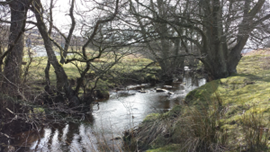Securing Urban Heritage: agents, access, and securitization
Securing Urban Heritage: agents, access, and securitization, Edited by Heike Oevermann and Eszter Gantner, Routledge, 2019, 216 pages, 25 illustrations in black and white.
What is this book? Is it about urban conservation, making historic spaces safe in troubling times, or ensuring broad access to the historic environment for a range of different groups with different purposes? This slim but dense academic volume of essays takes on the ambitious challenge of bringing these three different themes into a coherent whole with a broad selection of cases from across the globe.
For the Anglo-Saxon practitioner, the reader has first to work through language and terminology that will be unfamiliar, occasionally confusing and frequently multi-layered in its meaning. For European colleagues, more used to working with academia and translating seemingly nebulous concepts into practical projects, the book will provide helpful insights, but its breadth of ambition counterintuitively limits its use.
On a grander scale, the book does plough a furrow into which future seeds will be planted. A great deal of further work is needed on sustainable approaches to urban conservation, in particular on fundamental questions around how it can be effectively integrated into city management (and, in a UK context, on how this benefits municipalities that have been pared to the bone by a decade of austerity).
The nearest this volume comes to addressing that question is, first, in the case study concerning Kyoto City and Osaka. In spite of concepts of impermanence in Japanese approaches to conservation, it notes that conservation is, in effect, integrated into the country’s culture. Second, a number of the contributions touch on the question of values – an approach which creates opportunities for cross-cutting objectives. Although the case study concerning urban nuclear reactors is perhaps somewhat extreme, it neatly encapsulates the challenges around changing values and related uses, while Dennis Rodwell considers values-based conservation in more everyday situations. The case study of St Denis in northern Paris starts to tackle the challenge of how engaging with dissonant heritage narratives can create misunderstanding and, if poorly handled, end up excluding rather than including.
To this reviewer, the book cannot succeed in its aim of bringing together questions of conservation, access and actors into a coherent framework – perhaps because of the ambition and diversity of the case studies, or because of the inaccessible language, which caters to an academic audience. The result is a series of complex and somewhat convoluted arguments that are worth dipping in to when the reader has time and space to carefully consider what lessons might be drawn for their particular context. But for the often harassed local authority officers attempting proactively to shape conservation within their areas, this is possibly too much to ask.
This article originally appeared as ‘Convoluted arguments’ in IHBC's Context 163 (Page 57), published by The Institute of Historic Building Conservation in March 2020. It was written by Adam Wilkinson, director, Edinburgh World Heritage.
--Institute of Historic Building Conservation
Related articles on Designing Buildings Wiki
IHBC NewsBlog
Notre-Dame Cathedral of Paris reopening: 7-8 December
The reopening is in time for Christmas 2025.
Stirling Prize-winning Salford building to be demolished
The Centenary Building will be bulldozed as part of the wider £2.5bn Crescent regeneration project
Volunteers work to transform 100-year-old ‘hidden’ building into bothy
The building, named Druimnashallag, is located southeast of Oban.
The new ‘Arches for HERs’ Demo site, from the Getty Conservation Institute via HE
It shows how organisations responsible for historic environment records (HER) management can benefit from its powerful features.
ICOMOS-CIF 2024 Symposium celebrates 40th anniversary in Venice
It aims to critically review current practices and theories of conservation of built heritage around the world, and more.
HES establishes new national centre for retrofit of traditional buildings
HES plans to develop the centre follows £1m of funding from UKRI Arts and Humanities Research Council.
High Court rejects oral appeal against tower block decision in historic Bloomsbury
The request was for a full Judicial Review hearing against Camden Council’s approval of a 74m-high tower block in Bloomsbury.
Mayor of London and Government announce bold plans to transform Oxford Street
Plans include turning the road into a traffic-free pedestrianised avenue, creating a beautiful public space.
Crystal Palace Subway, for 160th anniversary
The remarkable Grade II* listed Crystal Palace Subway in South London begins a new era following major restoration.
National Trust brings nature back to an area twice the size of Manchester in less than a decade
The National Trust has achieved its aim of creating or restoring 25,000 hectares of priority habitat on its land by 2025.

















